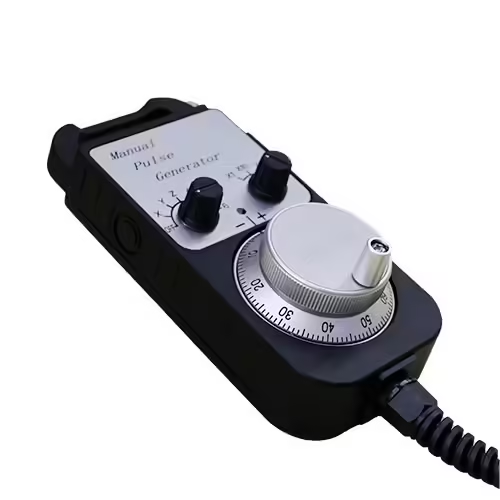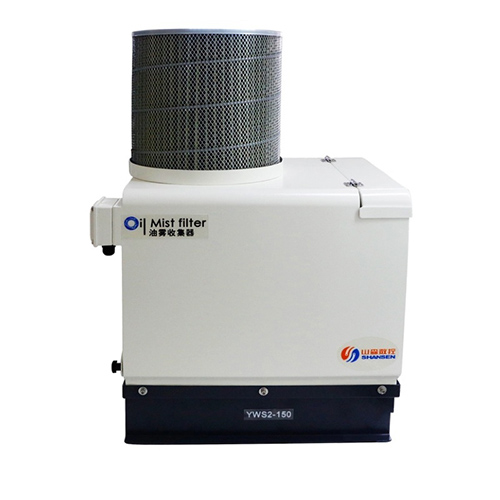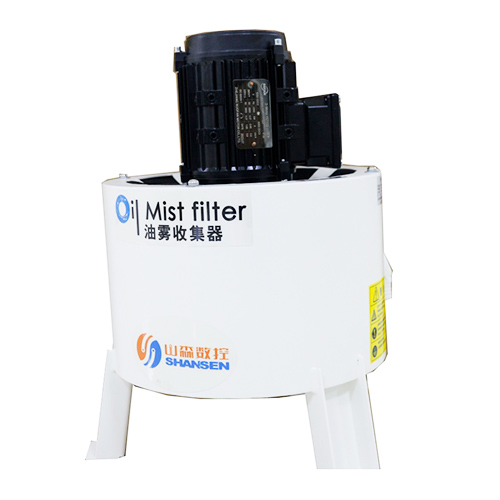-
WhatsAPP: +86 18706448138
-
Tengzhou, Shandong, China

Industrial Oil Mist Collector System Guide
An industrial oil mist collector system is specifically designed to capture and remove these harmful contaminants from the air, creating a cleaner.
Table of Contents
Introduction

In various industrial manufacturing processes, the generation of oil mist is an unavoidable byproduct. This airborne mixture of tiny oil droplets can pose significant risks to both human health and equipment efficiency. An industrial oil mist collector system is specifically designed to capture and remove these harmful contaminants from the air, creating a cleaner and safer working environment. Understanding the importance and functionality of an industrial oil mist collector is the first step towards ensuring optimal operational conditions and regulatory compliance within industrial facilities. This comprehensive guide will explore the key aspects of industrial oil mist collector systems, their benefits, different types, selection criteria, maintenance, and more.
Why Industrial Oil Mist Collection is Crucial
The presence of oil mist in industrial settings can lead to a multitude of problems. For human health, prolonged exposure to oil mist can cause respiratory issues, skin irritation, and other health concerns. In terms of equipment, oil mist can accumulate on machinery and surfaces, leading to reduced efficiency, increased wear and tear, and potential safety hazards such as slippery floors. Furthermore, many regions have strict environmental regulations regarding airborne emissions, making the implementation of an effective industrial oil mist collector system a necessity for compliance. Investing in a reliable oil mist collector not only protects employees and equipment but also contributes to a more sustainable and responsible manufacturing operation. The proper management of oil mist through an oil mist collector system is therefore a critical aspect of modern industrial practices.
Different Types of Industrial Oil Mist Collectors


The market offers a variety of industrial oil mist collector technologies, each with its own set of principles and applications. Understanding these different types is essential for selecting the most suitable system for specific industrial needs. Common types of industrial oil mist collectors include:
- Mechanical Impingement Collectors: These systems use baffles or fibrous filters to force oil mist particles to collide and coalesce, forming larger droplets that can then be drained. They are often used for larger particle sizes and higher oil mist concentrations.
- Electrostatic Precipitators (ESPs): ESPs utilize an electric field to charge oil mist particles and then attract them to collection plates. These systems are known for their high efficiency in capturing very fine particles and can often be cleaned and reused.
- Media Filtration Collectors: These collectors employ various types of filter media, such as fibrous materials or pleated cartridges, to capture oil mist particles as air passes through them. The efficiency depends on the filter material and the size of the particles.
- Centrifugal Collectors: These systems use centrifugal force to separate oil mist particles from the air stream. The contaminated air is spun at high speeds, causing the heavier oil droplets to be flung outwards and collected.
- HEPA Filtration Collectors: High-Efficiency Particulate Air (HEPA) filters are capable of capturing extremely fine particles, including sub-micron oil mist. These are often used as a final stage in more comprehensive industrial oil mist collector systems.
The choice of oil mist collector type will depend on factors such as the type and concentration of oil mist generated, the required air quality, maintenance considerations, and budget.
Key Features to Look for in an Industrial Oil Mist Collector
When selecting an industrial oil mist collector, several key features should be considered to ensure optimal performance and longevity. These include:
- Airflow Capacity (CFM/m³/h): The system should be capable of handling the required volume of air from the machinery or process generating the oil mist. Proper airflow is crucial for effective capture.
- Filtration Efficiency: The efficiency of the collector in removing oil mist particles of various sizes is a critical factor. Higher efficiency leads to cleaner air and better protection.
- Filter Media and Lifespan: The type and quality of the filter media will impact the collector’s performance and maintenance requirements. Consider the lifespan of the filters and the cost of replacement.
- Maintenance Requirements: Different industrial oil mist collector systems have varying maintenance needs. Consider the ease of cleaning or replacing filters and the frequency of maintenance.
- Energy Efficiency: Operating costs can be significant over the lifespan of the collector. Look for energy-efficient designs to minimize power consumption.
- Construction Quality and Durability: The collector should be built from robust materials to withstand the demands of the industrial environment and ensure long-term reliability.
- Noise Levels: The noise generated by the oil mist collector during operation should be within acceptable limits for the workplace.
- Safety Features: Ensure the collector incorporates appropriate safety features to prevent electrical hazards or other operational risks.
Carefully evaluating these features will help in choosing an industrial oil mist collector that meets the specific needs of the application.
Benefits of Implementing an Industrial Oil Mist Collector System
Investing in an industrial oil mist collector system offers numerous benefits for industrial facilities:
- Improved Air Quality: The primary benefit is the significant reduction of airborne oil mist, leading to a cleaner and healthier working environment for employees.
- Enhanced Worker Safety: By removing oil mist, the risk of respiratory problems, skin irritation, and slippery floors is reduced, contributing to a safer workplace.
- Extended Equipment Lifespan: Preventing the accumulation of oil mist on machinery helps to reduce wear and tear, leading to longer equipment life and lower maintenance costs.
- Reduced Maintenance Costs: Less oil mist buildup means less time and resources spent on cleaning machinery and work areas.
- Compliance with Environmental Regulations: An effective industrial oil mist collector helps facilities meet increasingly stringent environmental regulations regarding airborne emissions.
- Improved Product Quality: In some manufacturing processes, oil mist contamination can affect product quality. A clean environment helps to minimize this risk.
- Energy Savings: Some modern oil mist collector systems are designed for energy efficiency, leading to lower operating costs.
- Positive Company Image: Demonstrating a commitment to employee health and environmental responsibility can enhance a company’s image.
The comprehensive benefits of an industrial oil mist collector system make it a valuable investment for any industry dealing with oil mist generation.
Applications of Industrial Oil Mist Collectors Across Industries
Industrial oil mist collectors find widespread applications across a diverse range of industries where oil or coolant is used in machining or other processes. Some key applications include:
- Metalworking and Machining: CNC machining, grinding, turning, milling, and drilling operations often generate significant amounts of oil mist from coolants and lubricants. Industrial oil mist collectors are essential in these applications to protect workers and equipment.
- Automotive Manufacturing: Processes involving metal cutting, forming, and coating in the automotive industry rely heavily on industrial oil mist collector systems.
- Aerospace Manufacturing: The precision machining of aircraft components generates oil mist that needs to be effectively controlled using specialized oil mist collectors.
- Food Processing: While less common, some food processing applications involving lubricants can generate oil mist that requires collection to maintain hygiene and safety standards.
- Textile Manufacturing: Certain textile manufacturing processes involving oil-based lubricants may necessitate the use of industrial oil mist collectors.
- Power Generation: Maintenance and operation of certain power generation equipment can generate oil mist.
- Plastics and Rubber Processing: Some processes in these industries utilize oils that can generate mist.
The versatility of industrial oil mist collector technology allows it to be adapted to the specific needs of various industrial processes.
Selecting the Right Industrial Oil Mist Collector for Your Needs
Choosing the appropriate industrial oil mist collector system requires careful consideration of several factors specific to your application. A thorough assessment will ensure that the selected system effectively addresses your needs and provides long-term value. Key considerations include:
- Source and Characteristics of the Oil Mist: Understand the type of oil or coolant being used, the rate of mist generation, and the particle size distribution. Different oils and processes produce varying types and concentrations of mist.
- Airflow Requirements: Calculate the necessary airflow rate based on the size of the enclosed area, the number and type of machinery generating oil mist, and the desired air change rate.
- Space Constraints: Consider the available space for installing the industrial oil mist collector system. Some systems are more compact than others.
- Budget: Determine your budget for both the initial investment and ongoing operating costs, including energy consumption and filter replacements.
- Maintenance Capabilities: Evaluate your in-house maintenance capabilities and choose a system that aligns with your resources. Consider the ease of filter replacement and other maintenance tasks.
- Regulatory Requirements: Ensure that the selected industrial oil mist collector system meets all applicable local, state, and federal environmental and safety regulations.
- Future Needs: Consider potential future expansion or changes in your operations that might affect your oil mist collection requirements.
Consulting with experienced industrial oil mist collector suppliers can provide valuable insights and help you make an informed decision.
Maintenance and Best Practices for Industrial Oil Mist Collectors

Proper maintenance is crucial for ensuring the continued efficiency and longevity of your industrial oil mist collector system. Neglecting maintenance can lead to reduced performance, increased energy consumption, and potential safety hazards. Key maintenance practices include:
- Regular Filter Inspection and Replacement: Filters should be inspected regularly and replaced according to the manufacturer’s recommendations or when they become visibly clogged. Using the correct replacement filters is essential.
- Cleaning of Collection Chambers and Ducts: Over time, collected oil can accumulate in the collector’s internal chambers and ductwork. Regular cleaning is necessary to maintain optimal airflow and prevent blockages.
- Monitoring System Performance: Regularly monitor the pressure drop across the filters and the overall airflow of the system. Significant changes can indicate a need for maintenance.
- Checking for Leaks: Inspect the ductwork and connections for any leaks that could reduce the system’s efficiency.
- Electrical System Checks: Ensure that all electrical connections are secure and functioning correctly.
- Following Manufacturer’s Guidelines: Adhere to the manufacturer’s recommended maintenance schedule and procedures for your specific industrial oil mist collector model.
- Proper Disposal of Collected Oil: Establish a safe and environmentally responsible procedure for disposing of the collected oil.
Implementing a proactive maintenance program will maximize the performance and lifespan of your industrial oil mist collector system.
Conclusion
In conclusion, industrial oil mist collectors are indispensable for maintaining a clean, safe, and efficient working environment in a wide range of industrial applications. By effectively capturing and removing harmful oil mist particles, these systems contribute significantly to worker health, equipment longevity, regulatory compliance, and overall operational excellence. Understanding the different types of industrial oil mist collectors, their key features, benefits, and maintenance requirements is crucial for making informed decisions and maximizing the return on investment. Don’t compromise on the air quality of your facility. Contact us today to explore the best industrial oil mist collector solutions for your specific needs and take the first step towards a healthier and more productive future.
FAQ
Q: What is industrial oil mist?
A: Industrial oil mist is a suspension of fine oil droplets in the air, generated during various industrial processes involving the use of oils or coolants, such as machining, grinding, and spraying.
Q: Why do I need an industrial oil mist collector?
A: An industrial oil mist collector is necessary to remove harmful oil mist from the air, protecting worker health, preventing equipment damage, ensuring regulatory compliance, and improving overall workplace safety and cleanliness.
Q: How does an industrial oil mist collector work?
A: Industrial oil mist collectors work by using various filtration technologies, such as mechanical impingement, electrostatic precipitation, media filtration, centrifugal separation, or HEPA filtration, to capture oil mist particles from the air stream.
Q: What are the different types of industrial oil mist collectors?
A: Common types include mechanical impingement collectors, electrostatic precipitators (ESPs), media filtration collectors, centrifugal collectors, and HEPA filtration collectors.



